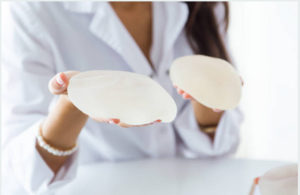Capsular contracture is the body’s response to foreign materials. It is essentially a scar tissue the body makes to wall off implants, whether they are breast implants or artificial joints, to protect the body from something that it recognizes as a foreign material. Typically every implant has capsular contracture. What we worry about are the higher grades of capsular contracture which can cause distortion or discomfort of the breast. As far as capsular contracture for breast implants goes, the grading system is:

Grade II: The implant looks normal but upon palpation has a little bit of firmness or tightness around the implant.
Grade III: The breast looks firm and feels firm.
Grade IV: This is a painful, hard and distorted breast.
The different grades obviously depend on the treatment. Treatments include:
Grade I: This is considered normal and therefore nothing is used for this grade of capsular contracture.
Grade II: Sometimes the firmness of the breast can be bothersome to the patient. If it’s not bothersome to the patient, it’s just something they notice, there is nothing that needs to be done. Occasionally things such as implant massage may help soften the capsule. If it is bothersome, a medication can be prescribed to treat capsular contracture. This is FDA off-label usage for Accolate (zafirlukast), which is a leukotriene inhibitor for asthma and allergies. But what they’ve found serendipitously is that patients who had firm breast implants while on this medication experienced softening of the implant. This medication can be used off label to help treat firm implants. Liver blood tests need to be done before the treatment begins and after the treatment has started to make sure there is no problem metabolizing the drug. It can take up to three months for this medication to start working. If at the three-month mark it has not made a difference, the medication typically is discontinued.
Grade III & Grade IV Contractures: Typically this is a surgical treatment. Occasionally a grade three contracture can be treated with the above medication and massage, but a grade four is almost always a surgical treatment. Surgical treatment for capsular contracture involves either capsulotomy, where the capsule is open to make more space for the implant, or capsulectomy where the capsule or the scar tissue of the implant is completely removed. With either procedure, typically the same incision that the implants were placed, would be used to open the capsule and the cavity. The implant would be removed from the pocket and the capsule work would be done.
Breast implant companies such as Mentor and Allergan, now offer reimbursement for capsular contracture for grade three or grade four as part of the warranty. This covers replacement of the implant as well as some help with the reoperation costs for the surgery. This is a new warranty covered for the implant companies and more can be found on the implant manufacturer’s website.
Of historical impact, capsules used to be treated with what was called a closed compression capsulotomy. The surgeon would forcefully squeeze the implant to try and rupture the capsule. Typically with this procedure, a lot of patients suffered a rupture of their implants, not necessarily the capsule, but this did temporarily soften this area. If a patient begins to have any problems with the capsule or grade II-grade IV capsular contracture, they need to be seen by the surgeon as soon as possible so that treatments can begin earlier.
There are several theories of why capsular contracture happens in some patients and not in others. One of the most common theories is called biofilm. This means that any kind of biologic burden like bacterial contamination, blood inside the cavity, a formation of seroma after the surgery can increase the risk of having capsular contracture. Because of this, several things are done during the operative procedure to prevent capsular contracture:
Immaculate hemostasis: making sure there is no bleeding in the capsule before the surgical placement of the implant.
Changing of the gloves: only the surgeon touches the implants with a clean pair of gloves, versus anyone else in the operating room that may be assisting with the procedure.
Use of antimicrobial irrigation for both the cavity and the pocket for the implant to be placed and for the implant itself. Delicate handling of the implant to make sure the shell of the implant isn’t damaged or unnecessarily manipulated during the surgical placement of the implant is also important.
There is some literature available that shows there’s a reduction of capsular contracture using a textured implant, however, this is minimal in contrast to using a small, round implant. Typically implants that are placed under the muscle have less capsular contracture than implants placed above the muscle secondary to the muscle acting as a built in massaging therapy for the implant. There’s also some new evidence that shows low-level light therapy or electromagnetic field therapy may reduce capsules that have formed for implants. However, this is still in the early study of capsular contracture and preventative treatment.
Capsular contracture is a common risk factor associated with breast implant surgery. This should be discussed by your surgeon and of course treated in a timely fashion if capsular contracture does develop.
To learn more about Capsular contracture correction, or to schedule your consultation with Board-Certified Plastic Surgeon Dr. Moenster, please fill out the form on this page. You can call our Tucson location at 520-207-3100 or our Sierra Vista location at 520-458-1787. We look forward to seeing you soon!

